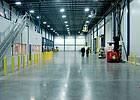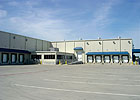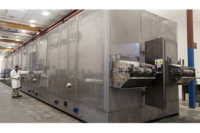

The session was titled, “Performance Considerations of the Thermal Envelope,” and its objective was to examine the relationship between IMPs and the refrigeration engine room.
Mike Adkins is a project engineer at United States Cold Storage, a leading third-party warehouse and logistics company. Adkins moderated the session at IACSC’s 2011 meeting last November in Las Vegas.
“As the key line of defense between outdoor ambient temperatures and maintaining temperature control, an optimally designed building envelope can result in impressive energy savings for a warehouse operator,” he says. “Our speakers discussed how panel, floor and roof designs interface with the refrigeration system and how these details save money for building operators. We covered refrigeration loads, panel thickness, termination details, condensation concern and optimizing design for ROI.”
Panelists were Jay Smith, vice president of sales at Metl-Span LLC, Lewisville, Texas; Larry Gilliland, director of engineering for SubZero Constructors, Los Angeles; and Andy Bowser, a principal with Team Group, Ltd., Euless, Texas. Prior to the IACSC meeting, panelists generated study data based on a fictional ice cream storage warehouse. Their study assumed …
… a 24,000-square-foot facility (150 feet by 160 feet) with approximately 21,700 square feet of wall panels
… 35 foot building height
… two doors between the freezer and dock
… -20

